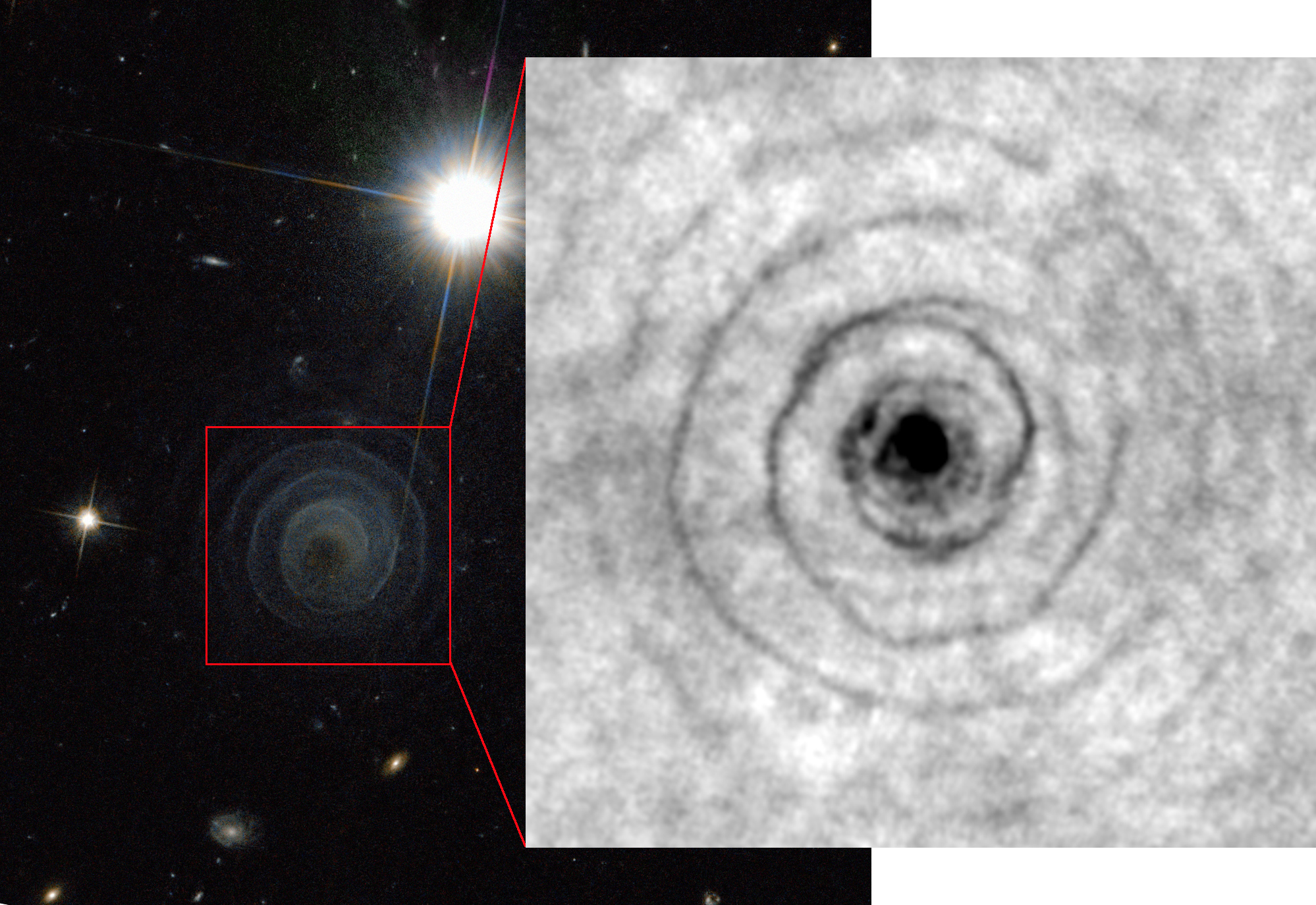Mesmerizing Space Spiral Surrounds Binary Star System in New Views

Astronomers recently peered deep into the perplexing structure of the two-star system LL Pegasi, revealing new details about its intricate spiral rings and how they formed.
In 2010, the Hubble Space Telescope captured a remarkable photo of the system, whose spiraling structure scientists called "one of the most perfect geometrical forms created in space." The image showed the gaseous material of a forming nebula circling LL Pegasi and its younger companion star.
Now, using the Atacama Large Millimeter/submillimeter Array (ALMA), a giant radio telescope in Chile, an international team of astronomers has taken a closer look at the cosmic pinwheel. The new findings from the huge radio observatory indicate that "the old star LL Pegasi is continuously losing gaseous material as it evolves into a planetary nebula, and the distinct spiral shape is the imprint made by the [pair of] stars orbiting in this gas," ESO officials said in a statement. [Watch the Weird Spiral of LL Pegasi Evolve in 3D]
"The spiral spans light-years and winds around with extraordinary regularity," they added in the statement. "Based on the expansion rate of the spiraling gas, astronomers estimate that a new 'layer' appears every 800 years — approximately the same time it takes for the two stars to complete one orbit around each other."
LL Pegasi is a dying star in the process of shedding its outer layers in the constellation Pegasus. According to a statement from ALMA, the star is currently at least 200 times larger than the sun.
Using computer simulations, the study researchers also found that the stars have a "highly elliptical orbit," which leads to the observed "spiral-shell pattern" of gas material that is continuously ejected from LL Pegasi. "This unusually ordered system opens the door to understanding how the orbits of such systems evolve with time, since each winding of the spiral samples a different orbit in a different period," Mark Morris, co-author of the study and a researcher at the University of California, Los Angeles, said in the statement from ALMA.
Breaking space news, the latest updates on rocket launches, skywatching events and more!
The new findings were detailed March 1 in the journal Nature Astronomy.
Follow Samantha Mathewson @Sam_Ashley13. Follow us @Spacedotcom, Facebook and Google+. Original article on Space.com.

Samantha Mathewson joined Space.com as an intern in the summer of 2016. She received a B.A. in Journalism and Environmental Science at the University of New Haven, in Connecticut. Previously, her work has been published in Nature World News. When not writing or reading about science, Samantha enjoys traveling to new places and taking photos! You can follow her on Twitter @Sam_Ashley13.


